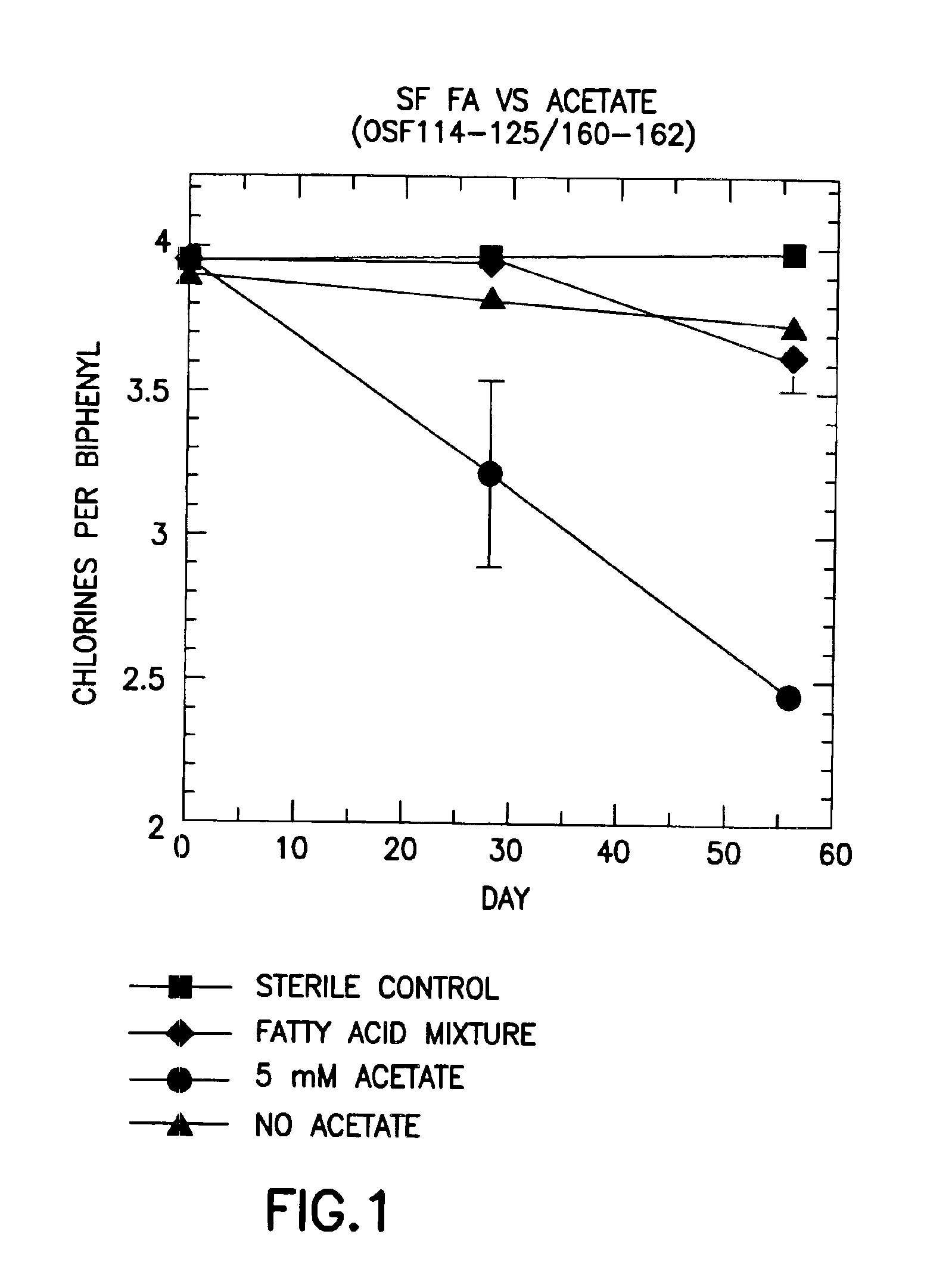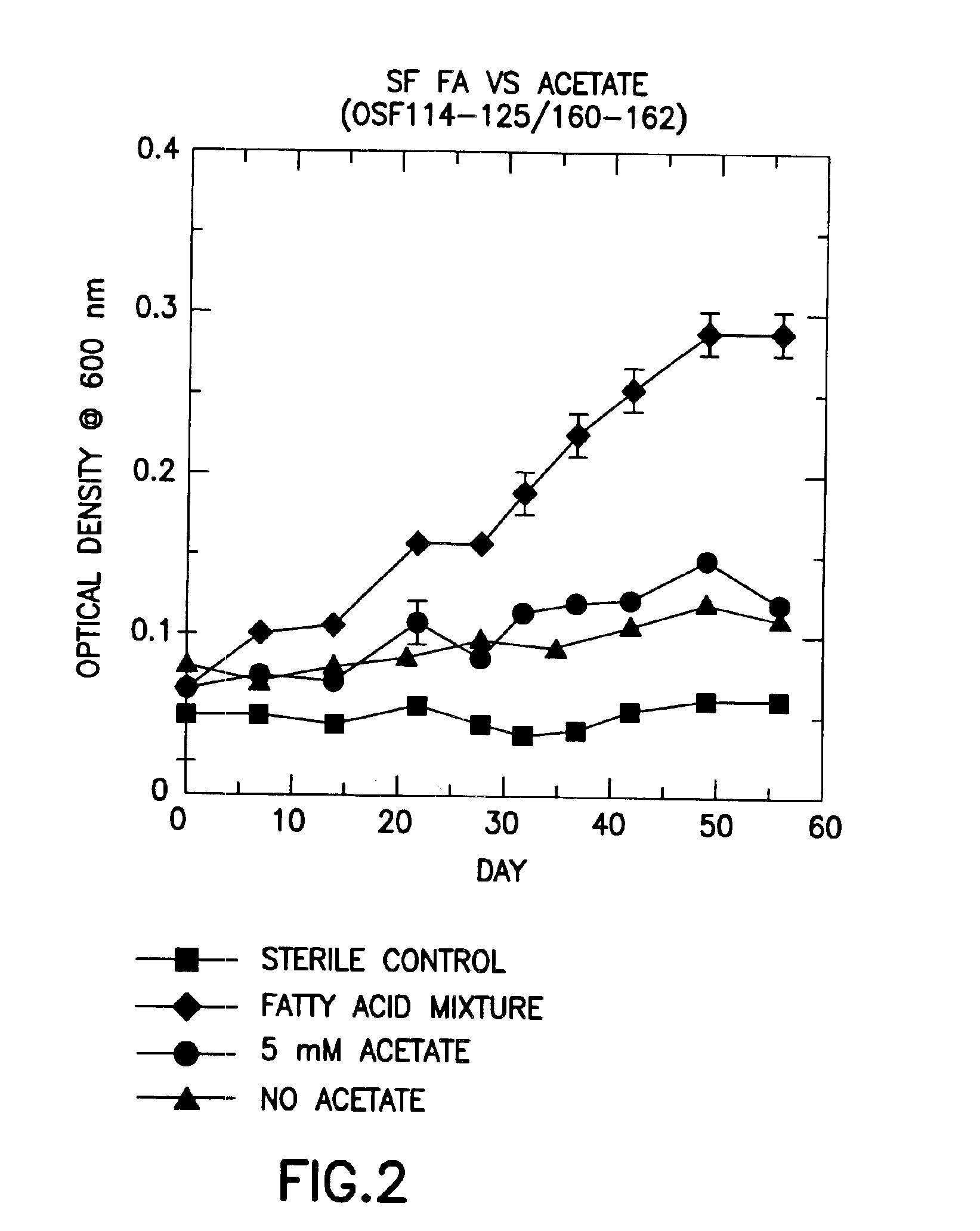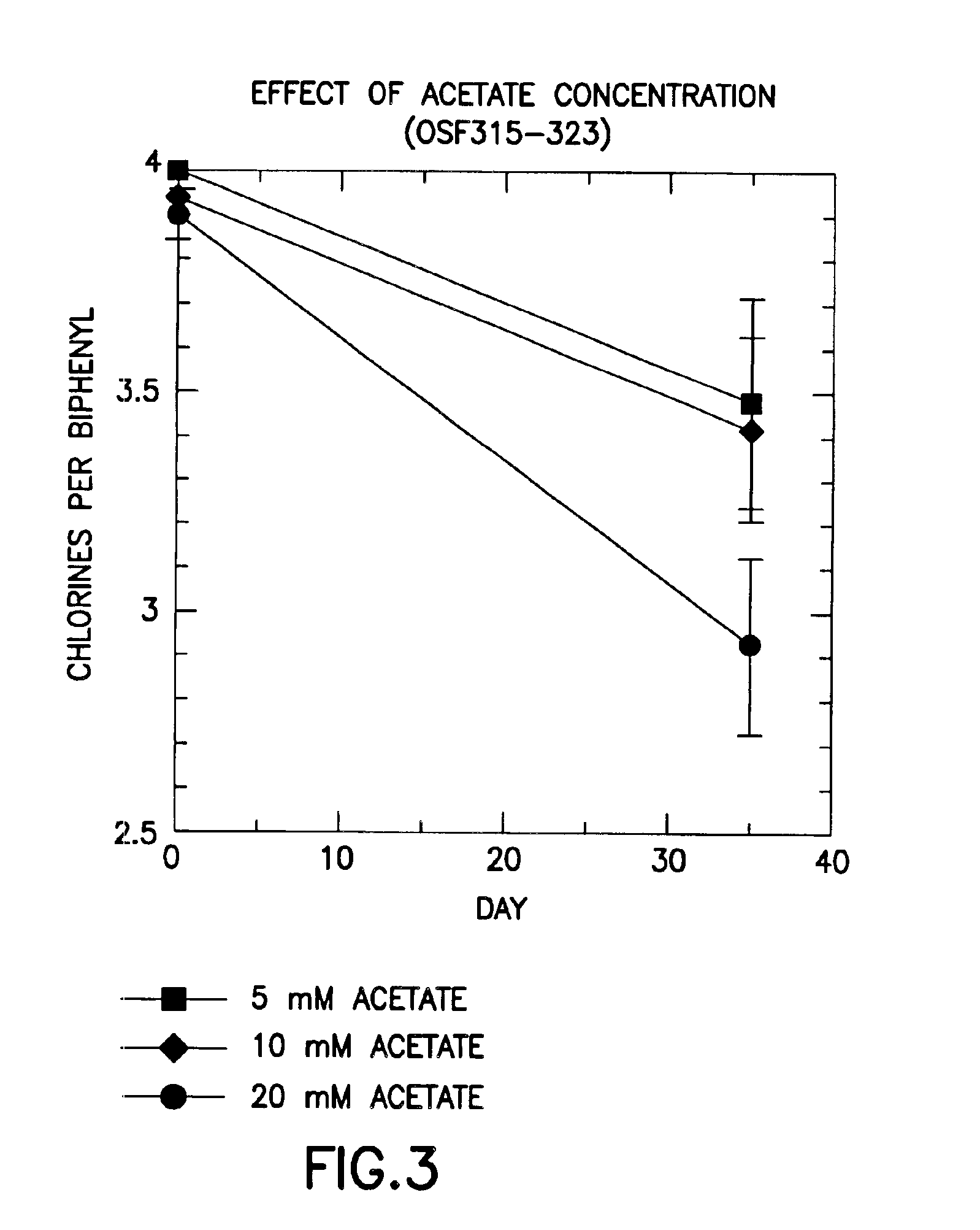Compositions and methods for microbial dechlorination of polychlorinated biphenyl compounds
- Summary
- Abstract
- Description
- Claims
- Application Information
AI Technical Summary
Benefits of technology
Problems solved by technology
Method used
Image
Examples
example 1
Methods and Materials for Development of 2,3,5,6-CB Ortho-Dechlorinating Consortia
[0088]Sediment Sample. Core samples (41×5 cm) of sediment were taken 8 meters below the surface water in the Inner Harbor of Baltimore, Md. Baltimore Harbor (BH) sediments were black in color, gelatinous in texture and had a strong petroleum odor. The salinity of the water column immediately above the sediments was 10 ppt at the time of the sampling. The lower 30 cm of sediment was immediately transferred to a glass container that had been purged with nitrogen. Sodium sulfide nonahydrate was added to a final concentration of 0.018% (wt / vol), and the vessel was sealed under the nitrogen with a butyl rubber stopper. The sediment sample was stored at room temperature in the dark prior to use.
[0089]Culture conditions. All media in these experiments included modified basal medium composed of the following components in grams per liter (final concentration) of demineralized water: Na2CO3, 3.0; Na2HPO4, 0.6; ...
example 2
Method and Materials
[0092]Culture Conditions. All sterile media in these experiments included an estuarine salts medium without sulfate (E-Cl) and were prepared anaerobically in an atmosphere that contained N2:CO2 as previously described by Cutter et al. An anaerobic enrichment culture capable of ortho dechlorination of 2,3,5,6-tetrachlorobiphenyl (2,3,5,6-CB) in the absence of sediment was used in this study. The culture had been transferred (10% (vol / vol)) 8 times in E-Cl medium with a mixture of fatty acids (final concentration of 2.5 mM each of sodium acetate, sodium propionate, and butyrate and 173 μM (50 ppm) of 2,3,5,6-CB (solubilized in acetone). This enrichment culture is referred to herein as the ortho culture.
[0093]Where indicated, transfers (10% (vol / vol)) were made from fatty acid-fed ortho culture into fresh E-Cl medium amended with 5 mM sodium acetate (Sigma Chemicals, St. Louis, Mo.) and 173 μM (50 ppm) of 2,3,5,6-CB (AccuStandard, New Haven, Conn.). Sequential trans...
example 3
Materials and Methods for Development of Double-Flanked 2,3,4,5-CB Dechlorinating Consortium of Microorganisms
[0118]Sediment Sample. Sediment samples were collected with a petite Ponar grab sampler at a subsurface depth of 4 meters in the Ashley River branch of Charleston Harbor (Charleston, S.C., USA). Sediments had a black coloration, and a gelatinous texture. The combined contents of the sampler were transferred to 0.95 liter canning jars (Ball Corporation, El Paso, Tex.). The jars were filled to the top and immediately sealed with dome tops and ring seals to exclude air. The samples were stored at ambient temperature in the dark prior to use.
Culture Procedures
[0119]An estuarine medium (E-Cl) was prepared as described by Berkaw et al., except that Na2SH2O was not added. The final pH of the medium was 7.0. Charleston Harbor sediment, when used as a medium component during the initial enrichment development, was dried, ground and autoclaved twice for 1 hour at 121° C. for 30 minute...
PUM
| Property | Measurement | Unit |
|---|---|---|
| Fraction | aaaaa | aaaaa |
| Fraction | aaaaa | aaaaa |
| Electrical conductance | aaaaa | aaaaa |
Abstract
Description
Claims
Application Information
 Login to View More
Login to View More - R&D
- Intellectual Property
- Life Sciences
- Materials
- Tech Scout
- Unparalleled Data Quality
- Higher Quality Content
- 60% Fewer Hallucinations
Browse by: Latest US Patents, China's latest patents, Technical Efficacy Thesaurus, Application Domain, Technology Topic, Popular Technical Reports.
© 2025 PatSnap. All rights reserved.Legal|Privacy policy|Modern Slavery Act Transparency Statement|Sitemap|About US| Contact US: help@patsnap.com



